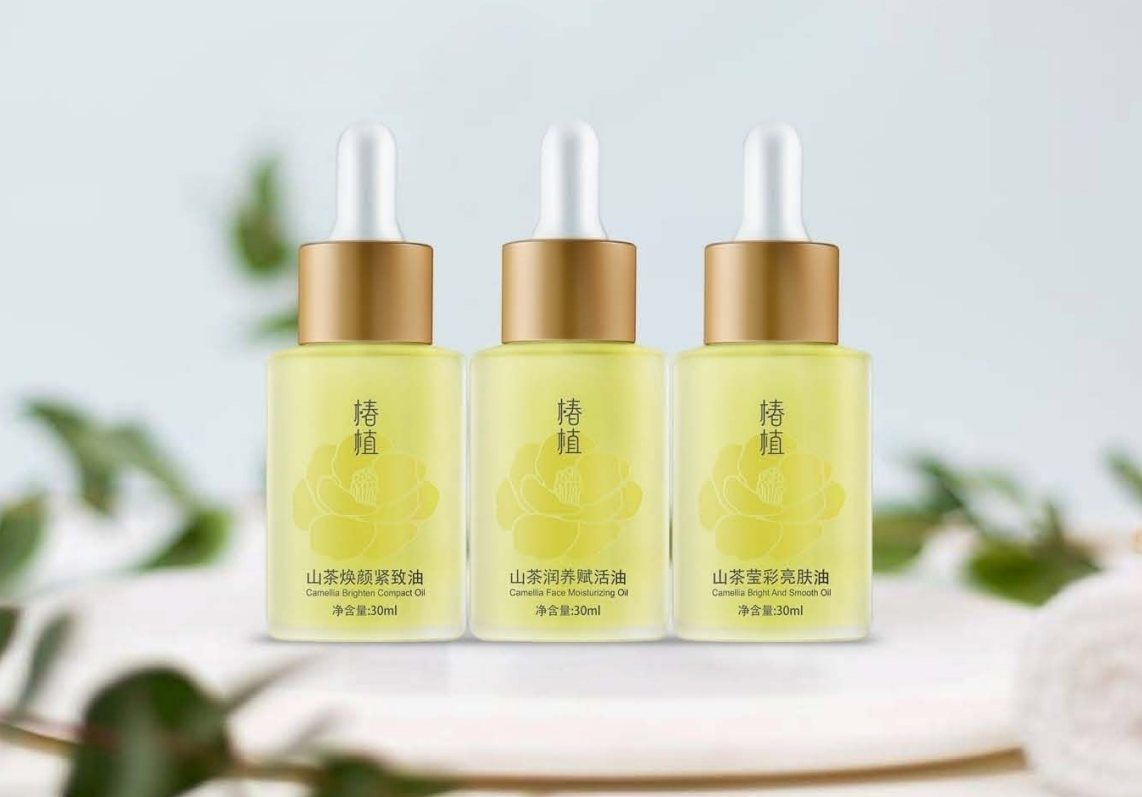The high value-added products of camellia oil are yet to be developed.
The camellia plant, palm, olive, and coconut together form the world’s four largest woody oil crops. Camellia oil is derived from the Camellia oleifera plant. In addition to being edible, it is also used in skin care because it is rich in glyceryl oleate and is easily blended with the skin.
Recently contacted personal care brand “Chun Zhi” is a personal care brand based on camellia oil ingredients. Its holding company Baohua Nongke was established in 2009 and has a 40,000 mu organic camellia oil plantation base. It mainly produces small organic camellia oil.
In the past two to three years, the “Party Party” has emerged in the domestic skin care industry and has become one of the important factors that affect consumers’ purchasing decisions. However, as more and more skin care ingredients are known and paid attention to by consumer groups, it is more and more difficult for personal care brands to find innovative and effective skin care ingredients, construct product features and brand memory anchors.
The content of unsaturated fatty acids in camellia oil exceeds 90%, which is similar to the structure of the human sebum membrane, and is easily absorbed by the skin. It is also rich in trace elements such as oleic acid, tea polyphenols, camellia saponin, squalene, etc. Yu Xiang, the founder of “Tsubaki”, told us that the industry’s current understanding of the external use of camellia oil is still in its primitive stage. On the one hand, the producers of camellia oil are not familiar with the production process of skin care products. On the other hand, skin care companies do not know enough about camellia oil.
(picture from Chunzhi)
The reasons why camellia oil has not been popularized on a large scale mainly include limited production capacity, backward processing, and high cost. The government encouraged the cultivation of camellia plants 10 years ago, and this part of the camellia plants has gradually entered a period of high yield. At present, China is the largest production base of camellia oil, accounting for 99% of global production. In addition, there are only a very small number of countries in Southeast Asia and Taiwan.
Yu Xiang added that although the production of camellia oil has increased, the technology of deep processing is still relatively backward, and the development of high value-added products such as skin care products has not kept pace. Camellia oleifera plants mainly grow on the gentle slope of Chaoyang, which is difficult to pick by machine, mainly by manual picking, and the labor cost is relatively high. At the same time, the oil camellia fruit shell is hard and needs to be dried and unshelled. This part of the work is also mainly manual, which further increases the production cost. In addition, tea seeds are harvested only one season a year. For large-scale enterprises, a large amount of cash is required for raw material storage. Most of the camellia oil is digested and produced by local small oil mills to produce earth pressed tea oil, which has many impurities, low oil yield and high price.
Because of the above reasons, the entire tea oil industry is in a relatively primitive state, mostly small-scale oil extraction. At present, there are limited oil tea producers with large-scale deep processing capabilities. Baohua Nongke is one of them. Based on the weight of one kilogram, the price of tea oil in Baohua Nongke is about 30% lower than the price of the oil mill. The advantages of production capacity, raw material cost, and the team’s understanding of comprehensive utilization and deep processing of Camellia oleifera together constitute the barriers of “Tsubaki”.
The “Tsubaki” products mainly include two series: personal care series and maternal and infant series. Personal care products are divided into three types according to the three major effects of moisturizing, firming and skin lightening. In addition, the main oil products such as camellia cleansing oil, facial repair oil, massage oil, etc., are priced at 100 yuan -400 yuan.
Camellia oil is also called “confine oil” by residents around the place of origin. On the one hand, it can help pregnant women and mothers to supplement their nutrition. On the other hand, it is used for skin smearing, which can help infants and children protect the skin and isolate urine and sweat. Stimulating, functions like talcum powder. In April of this year, the sales volume of “Tsubaki” baby touch oil products ranked second in the category of Tmall domestic touch oil products.
In addition to its own products, the company also undertakes OEM orders to provide OEM services for other baby skin care products. In 2019, the annual revenue of the brand is tens of millions, and the sales of its own products and OEM revenue each account for 50%.
In terms of channels, “Tsubaki” began to focus on offline franchise stores. There are currently 12 stores, mainly in provinces such as Fujian, Hunan, Jiangxi, and Jiangsu. Most stores were profitable before the outbreak. At present, the team is expanding online channels, hoping to connect online and offline channels. Live broadcast is one of the key points for the team to explore online. The early stage mainly focused on small-scale cooperation to clear inventory. After the product structure is reorganized, the Chunzhi team and shareholder Baohua Nongke will carry out a larger-scale promotion of the camellia oil skin care raw material oil.
